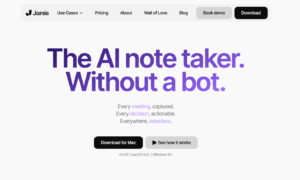Remote work has rapidly evolved from a niche option to a mainstream necessity. The pandemic accelerated this shift.
But even before that, communication technology services had been paving the way for flexible work. These tools have not only made remote work feasible. They have also made work incredibly efficient and productive.
Here’s how they have revolutionized the landscape of remote work.
Enhanced Collaboration
Gone are the days when remote work meant feeling isolated from your team. Thanks to team messaging apps like Slack, Microsoft Teams, and Zoom, employees can stay connected. Colleagues can continue to converse as if they were sitting next to each other in an office.
These platforms offer real-time messaging, file sharing, and even integrated project management tools. This makes collaboration seamless and efficient.
For example, Slack channels can be created for different teams, projects, or even social interactions. They provide a structured yet flexible communication environment.
Microsoft Teams goes a step further by integrating with Office 365. It allows users to collaborate on documents in real-time.
These tools ensure that team members can easily share ideas. They can ask questions and provide updates. Remote collaborations have never been more easy.
Video Conferencing: Bridging the Distance
One of the biggest changes for remote work is video conferencing. Platforms like Zoom, Google Meet, and Cisco Webex have made the best meetings possible. Regardless of physical location, anyone can be in a meeting.
Online conferencing has been a game-changer. It has enabled them to hold meetings. Companies can conduct interviews. Companies can even host virtual events.
Video chats offer a level of interaction that emails cannot. It allows for better understanding through visual cues and body language. It fosters stronger relationships and more effective communication.
Features like screen sharing, breakout rooms, and recordings are great. They make remote meetings as productive as in-person ones. Virtual communication can feel like actual face-to-face conversations.
Cloud-Based Document Management
Cloud-based systems like Google Drive, Dropbox, and OneDrive are revolutionary. They have forever changed how remote teams store, share, and collaborate on documents.
These platforms allow multiple users to work on the same document at the same time. Changes are being saved in real-time. This eliminates the need for sending files back and forth via email. It reduces the risk of version control issues.
For instance, Google Drive has integrated Google Docs, Sheets, and Slides together. This makes it easy for teams to collaborate on various types of documents.
Version history features allow users to track changes made by different team members. They can ensure transparency and accountability.
These cloud-based solutions make document management more efficient and accessible. They support the remote work model.
Project Management Tools
Project management tools have become essential for remote teams. These platforms offer a centralized space for planning, tracking, and managing projects. They ensure that everyone is on the same page.
Features like task assignments, deadlines, and progress tracking help keep projects on schedule. It can keep team members accountable.
Popular tools like Asana, Trello, and Basecamp allow for easy collaboration. They also integrate with other tools like team messaging apps.
These tools have made it easier for remote teams to stay organized, focused, and productive. They provide a virtual workspace. These spaces mimic the efficiency of a physical office.
Secure Communication
Security is a critical concern for remote work. Encryption ensures that messages, files, and calls are secure. They make sure they are safe from unauthorized access.
Tools like Signal and WhatsApp offer end-to-end encryption. They ensure that sensitive data remains confidential.
For remote work, platforms like Signal provide robust features. They protect messages from being intercepted.
Email encryption services like ProtonMail offer extra layers of security. This makes them ideal for sending sensitive docs. So, remote workers can share data through the cloud with peace of mind.
Virtual Private Networks (VPNs) for Secure Access
A VPN provides a secure connection to a network over the internet. This is crucial for remote workers accessing company resources.
VPNs like NordVPN, ExpressVPN, and Cisco AnyConnect encrypt internet traffic. They protect data from potential cyber threats. They also allow remote workers to access restricted networks and websites securely.
For instance, remote workers who need to access their company’s internal network can use a VPN to connect securely. This ensures that sensitive information remains protected. It also reduces the risk of data breaches.
VPNs are particularly important for remote work in industries like finance and healthcare.
Time Tracking and Productivity Apps
One of the common misconceptions about remote work is that employees are less productive. However, with the use of time tracking and productivity apps, this can be easily debunked.
Apps like Toggl, RescueTime, and Forest allow remote workers to track their time spent on different tasks. This helps them stay accountable. It helps them manage their workload efficiently.
Productivity apps like Focus, Evernote, and Trello help remote workers stay organized. They can prioritize tasks, set reminders, and create to-do lists.
Voice over Internet Protocol (VoIP) Services
VoIP services have made it affordable for remote workers to make calls. They can conduct business meetings. They don’t have to worry about long-distance call charges.
These services also offer features like voicemail and call forwarding. They ensure that communication is seamless and efficient.
They are also ideal for businesses with clients abroad. They can save on costs while maintaining communication.
Managed Voice over Internet Protocol (VoIP) services provide an all-in-one solution. This includes features like call analytics. They make communication better for all workers.
AI and Automation
Artificial Intelligence (AI) has become a crucial part of remote work. It allows for automation and streamlining of tasks.
For example, chatbots can handle customer service inquiries while employees focus on more pressing tasks. AI tools can also analyze data and provide insights to help with decision-making.
Automation also helps remote workers save time and be more productive. Tools like Zapier, IFTTT, and Microsoft Power Automate allow for automatic task completion. This reduces manual workload and minimizes errors.
Communication Technology Services: The Future of Remote Work
Communication technology services have been instrumental in making remote work efficient and productive. They have bridged the gap between physical distance. They allow employees to stay connected and collaborate seamlessly.
As remote work continues to grow in popularity, these services will only continue to evolve and improve. They will remain a key factor in making remote work possible and successful.
Did you find this article helpful? If so, check out the rest of our site for more.
Read More From Techbullion And Businesnewswire.com



































